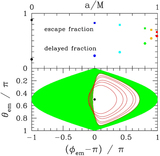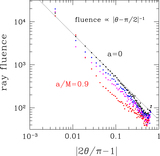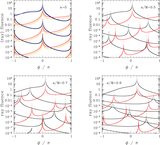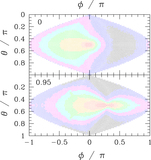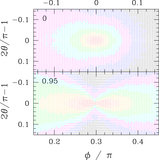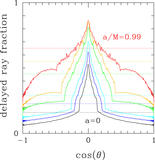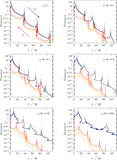Image Details
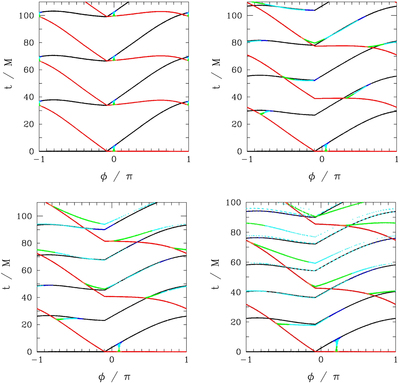
Caption: Figure 7.
Pulse arrival times as a function of the azimuth of an observer positioned near θ = π/2 at a large distance from the BH. Angle ϕ = 0 is antipodal to the emission point on the ISCO. Top left panel: a = 0; top right panel: a/M = 0.5; bottom left panel: a/M = 0.7; bottom right panel: a/M = 0.9. In all cases the zero of time is shifted to the first pulse detected at a given observing angle. Black (red) lines denote prograde (retrograde) rays, which remain confined to ﹩| \cos \theta | \lt 0.1﹩ from the emission point all the way to infinity. The periods of the respective light rings are clearly visible. Blue and cyan denote prograde rays with ﹩0.1\lt | \cos \theta {| }_{\max }\lt 0.5﹩ and ﹩| \cos \theta {| }_{\max }\gt 0.5;﹩ orange and green denote the corresponding retrograde rays. When a/M is small, most of the delayed pulses detected by an equatorial observer follow nearly equatorial geodesics, with the exception of caustic features associated with narrow azimuthal bundles of rays that reach close to the poles. The azimuthal range of the polar rays broadens with growing a/M; comparison with Figure 4 shows that the caustics still coincide with the connections of the cyan/green and black red curves.
Copyright and Terms & Conditions
© 2019. The American Astronomical Society. All rights reserved.


